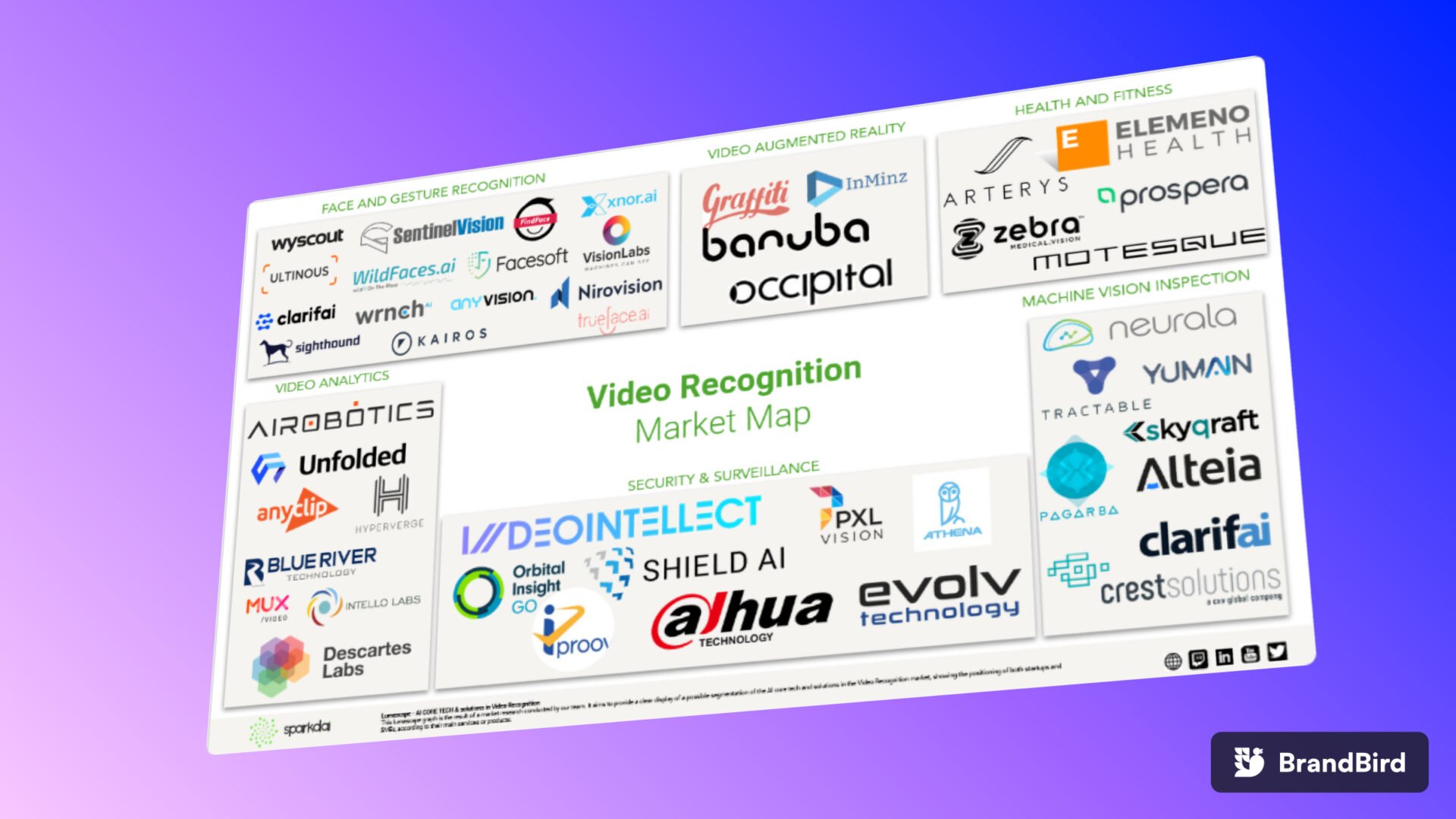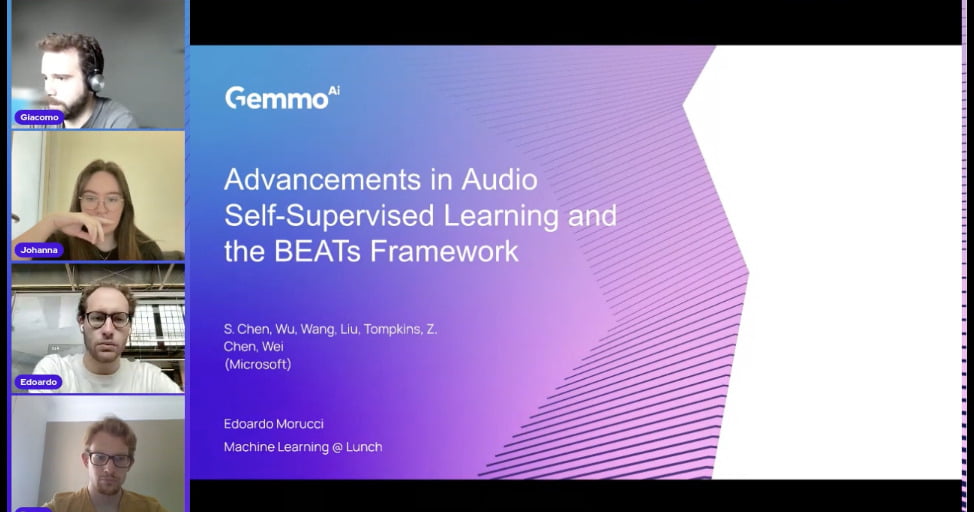Video Recognition – The Lumascape
Video Recognition – The Lumascape The Lumascape infographic proves to be useful for deepening the segmentation of various expanding AI markets. We could not refrain from designing one that includes the companies th...

Video Recognition – The Lumascape
The Lumascape infographic proves to be useful for deepening the segmentation of various expanding AI markets. We could not refrain from designing one that includes the companies that make Video Recognition & Analytics their core business.
But before diving into the segmentation analysis, we want to give you more context starting from the definition of Video Recognition.
Video Recognition
Video Recognition is the computer’s ability to acquire, process, and analyze data coming from visual sources, i.e. videos in order to produce information and make decisions. We can generally state that it is a branch of Computer Vision, the AI-based field that deals with how computers can gain high-level understanding from digital images or videos.
In the last few years there have been great advances in terms of functionality, accuracy and spatial analysis for object detection and image classification. This has lead enterprises to widely adopt ready-to-use video platforms or to build their own customized platform. The technology now allows computers to “see” thousands of video streams and not only identify objects and human presence by their form (e.g. object detection and object identification), but also detect their spatial orientation (e.g. pose and motion estimation) and their interaction with the environment (e.g. human agents tracking). Therefore, it is not hard to imagine the potentially infinite applications of Video Recognition technologies. From surveillance and control in a working environment, to sport human tracking to estimates the performance of players, or, again, detect anomalies in assembly line production and mobile phone applications of face recognition in real time.
So if you are curious to discover more about all the different applications and the technology behind them, keep reading our Lumascape analysis.
Face and Gesture Recognition
How many times have you unlocked your smartphone by simply smiling at the camera? Have you ever asked yourself what the powerful technology behind it was? Well, now you know this happens thanks to Video Recognition. Face Recognition is typically associated with security applications designed to distinguish individuals from vast datasets such as law enforcement databases or video camera recordings that derive from public places as crowded airports. For instance during the Covid era, it proved to be very useful for the tracking of spatial distance keeping or for detecting mask usage, as governments regulations required.
Yet there are significant growth opportunities for vision-based depth-sensing technologies. Other likely growing uses are related to Psychological and Behavioral Analysis, a field unexplored so far since a professional human presence is still considered vital. Human computer interaction, promising to revolutionize how computers engage with us, not only by mechanical or vocal commands anymore, and Deepfake. The latter shows the possible negative implications of this technology. It is in fact the act of faking content, replacing a person in an existing image or video with someone else. It is certainly supportive for a filmmaker handling the faithful restitution of the image of a Hollywood diva of the 1920s, but potentially harmful for fraud and identity theft.
If you desire to know more about the fraud system through Deepfake and Generative adversarial networks” (GAN) watch our video:
Health and Fitness
Not so different from Face and Gesture recognition, human motion tracking through video analysis platforms enables sports players to get real-time performance measurements, and capture their health parameters, replacing the need of a personal trainer.
Not to mention that the outbreak of the COVID-19 pandemic had taken a severe toll on the global sporting ecosystem. Accelerating the development of new systems for fan entertainment. Due to the postponement of the events or closed-door matches, many organizations introduced different types of content, such as virtual live entertainment, and E-sports, delivered on platforms of video analysis, capable of providing highlights and auto-tagging of main match events. Powered by computer vision algorithms, the global sports analytics market size is expected to grow at a compound annual growth rate of 21.3% from 2021 to 2028.
If you are eager to learn more about Sport Tech market share, check out our Sport Tech Industry page.
The healthcare sector, video recognition tools, and in general computer vision, have become integral to doctors across different fields. From detecting early symptoms with high certainty through unusual behavior and facial expression recognition, to video surveillance equipment in hospitals, and robotic arms equipped with cameras for surgical operations or invasive examinations.
Video Augmented Reality
Essentially Augmented Reality enables computing devices such as smart glasses to overlay imagery or audio onto the existing real-world scenery. Computer vision plays an important role in augmented reality. It allows computers to process and analyze digital videos and images, detect and identify objects and locate real-world elements. More simply, it helps to build more accurate augmented reality environments. An everyday life use-case that immediately jumps to mind is without doubt the use of Snapchat filters. By locating and reading the geometry of your face, and capturing the mimic, the app maps facial features and provides immersive experience of real-time visual effects to your face, “filtering” the reality.
Far from these fun uses, there are many other AR applications that certainly bring enormous benefits to our lives. Like its contribution to the healthcare industry, making surgical incisions more precise and safer. Or for the E-Commerce sector, making it possible for buyers to visualize furnishings within their homes or try on clothes, before deciding if it’s the perfect fit.
Security and Surveillance
All you need is a camera and the game over. Thanks to cheaper IP cameras and more sophisticated software of Video Recognition, AI is redefining the Surveillance sector for both home and public places. In fact, the sector is one with the most profitable growth. Checking live or recorded surveillance clips, the latest computer vision techniques provide real-time alerts to prevent crime through the detection of suspicious behavior or identifying injurious objects. But also they are useful for scanning huddles of people on public places footage to assure the presence of an individual of interest or wanted persons.
Machine Vision Inspection
Manufacturing is slowly turning into fully-automated factories, resulting in a high demand for extensive intelligent systems to monitor industrial operation. Video recognition platforms are widely used in manufacturing to detect anomalies on assembly lines, identify defects or irregularities on a product or mechanical components, verify the correct positioning, read barcodes and labels, for the navigation of autonomous vehicles and also for the inspection of safe working conditions for employees. A machine vision system, unlike a human inspector, is always 100% functional; this results in improved product quality, general optimization and lower production costs.
Video Analytics
We have hit the end of this Lumascape analysis, reaching the last segment. We opted to include in it all the technologies for video analysis with scopes that differ from those mentioned previously. As sometimes, the blurred sub-segments of the vast video recognition field are hardly definable in net segments. The following are other video recognition applications that find a place in our society, many times without us noticing: video analysis to detect plant diseases in agritech, urban traffic monitoring, drones equipped with cameras to capture geo-spatial data and transform them in insightful maps, drones for defense and Intelligence purposes, video platform for real-time monitoring of live events and concerts and on-demand video experience.



